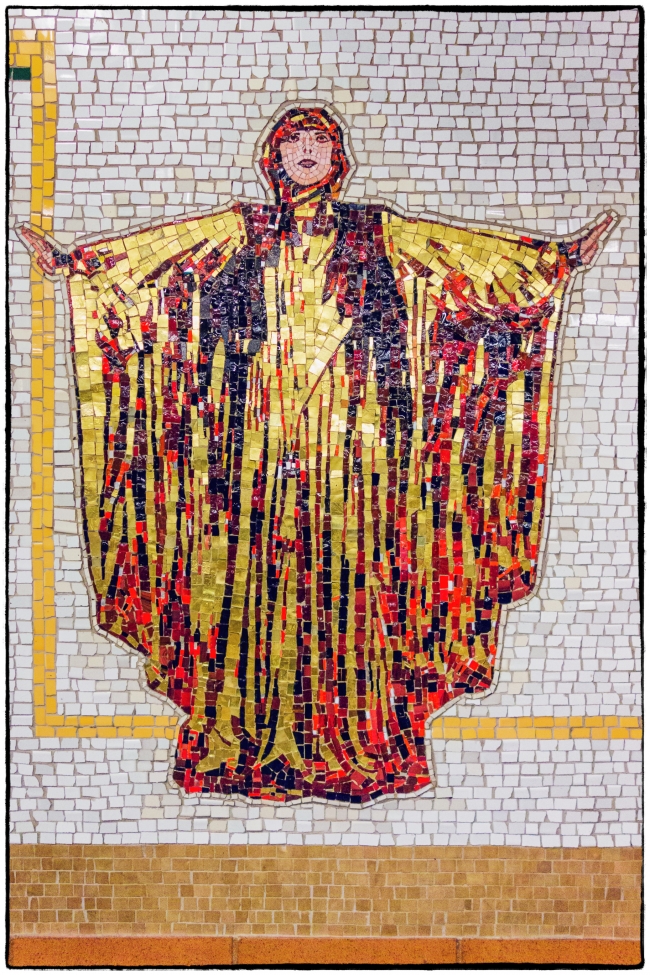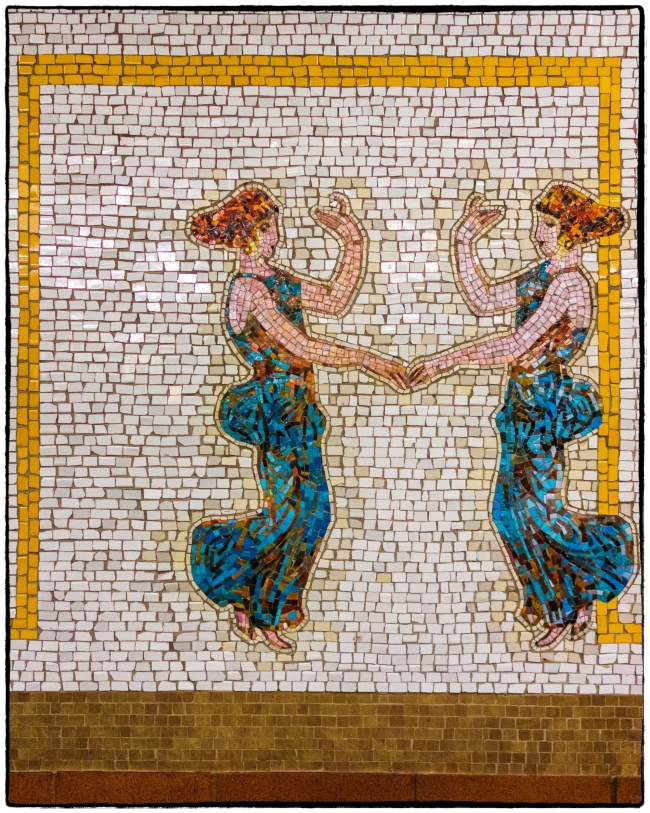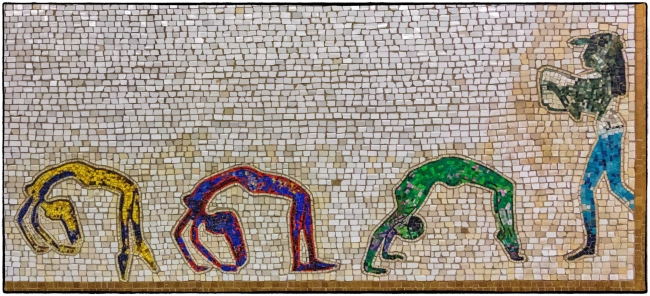When we went to see “The King and I” other day we took the subway to the 66th Street-Lincoln Center stop. As we were returning I noticed these colorful mosaics on the walls.
According to the Metropolitan Transit Authority (MTA) – Arts and Design:
NANCY SPERO
Artemis, Acrobats, Divas and Dancers, 2001
Glass and ceramic mosaic on platform walls
This series of 22 brilliantly colored glass mosaic panels lines the walls of the station and bows to Lincoln Center’s opera, ballet, and classical music halls – and the vibrant, artistic character of the Upper West Side neighborhood. Spero conveys this through the use of iconic images of women both real and mythical, from such varied sources as archaeology, architecture, mythology and the contemporary world.
In Artemis, Acrobats, Divas, and Dancers, the central icon of opera, the Diva, is repeated in various forms that lead and follow riders through the station, giving the illusion of movement and change. Elsewhere, Spero represents scenes from the subway and the city outside, the architectural backgrounds enlivened by musicians performing and athletes running, signaling you are in a creative and energetic place, the Upper West Side of Manhattan.
According to Wikipedia:
Nancy Spero (August 24, 1926 – October 18, 2009) was an American visual artist. Born in Cleveland, Ohio, Spero lived for much of her life in New York City. She was married to, and collaborated with, artist Leon Golub.[1] As both artist and activist, Nancy Spero had a career that spanned fifty years. She is known for her continuous engagement with contemporary political, social, and cultural concerns. Spero chronicled wars and apocalyptic violence as well as articulating visions of ecstatic rebirth and the celebratory cycles of life. Her complex network of collective and individual voices was a catalyst for the creation of her figurative lexicon representing women from prehistory to the present in such epic-scale paintings and collage on paper as Torture of Women (1976), Notes in Time on Women (1979) and The First Language (1981). In 2010, Notes in Time was posthumously reanimated as a digital scroll in the online magazine Triple Canopy




